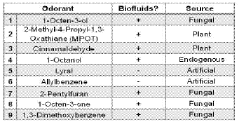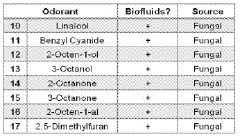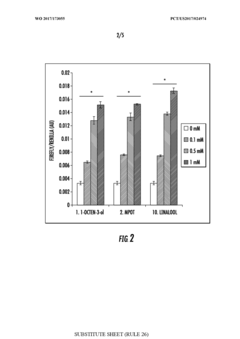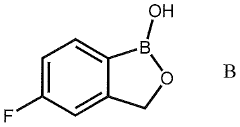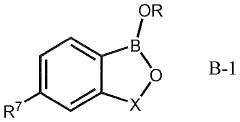Environmental Impacts on Muscimol-Producing Fungi Populations
JUL 4, 20259 MIN READ
Generate Your Research Report Instantly with AI Agent
Patsnap Eureka helps you evaluate technical feasibility & market potential.
Muscimol Fungi Background
Muscimol-producing fungi, primarily belonging to the Amanita genus, have a rich history intertwined with human culture and scientific research. These fungi are known for their psychoactive properties, which stem from the presence of muscimol, a potent GABA receptor agonist. The most notable species in this group is Amanita muscaria, commonly known as the fly agaric or fly amanita.
The relationship between these fungi and their environment is complex and multifaceted. Amanita species are typically found in symbiotic associations with various tree species, forming ectomycorrhizal relationships that benefit both the fungus and the host plant. This mutualistic interaction plays a crucial role in forest ecosystems, facilitating nutrient exchange and enhancing the overall health of the forest.
The distribution of muscimol-producing fungi is widespread, with species found across temperate and boreal regions of the Northern Hemisphere. They are particularly abundant in coniferous and mixed forests of Europe, Asia, and North America. The specific environmental conditions required for their growth and proliferation include factors such as soil composition, moisture levels, temperature ranges, and the presence of suitable host trees.
Climate change and anthropogenic activities have begun to impact the natural habitats of these fungi, potentially altering their distribution patterns and population dynamics. Changes in temperature and precipitation regimes can affect the timing of fruiting body formation and the overall productivity of fungal populations. Additionally, deforestation and land-use changes may disrupt the delicate balance of forest ecosystems, potentially threatening the long-term survival of certain Amanita species.
The biochemical pathways involved in muscimol production within these fungi are of particular interest to researchers. The biosynthesis of muscimol is believed to involve the decarboxylation of ibotenic acid, another psychoactive compound found in Amanita species. Understanding the environmental factors that influence these biochemical processes is crucial for comprehending the ecological role of these compounds and their potential applications in pharmacology and biotechnology.
Recent studies have begun to explore the genetic basis of muscimol production in fungi, aiming to elucidate the genes and regulatory mechanisms involved in this process. This research not only provides insights into the evolution of secondary metabolite production in fungi but also opens up possibilities for biotechnological applications, such as the controlled production of muscimol in laboratory settings.
The relationship between these fungi and their environment is complex and multifaceted. Amanita species are typically found in symbiotic associations with various tree species, forming ectomycorrhizal relationships that benefit both the fungus and the host plant. This mutualistic interaction plays a crucial role in forest ecosystems, facilitating nutrient exchange and enhancing the overall health of the forest.
The distribution of muscimol-producing fungi is widespread, with species found across temperate and boreal regions of the Northern Hemisphere. They are particularly abundant in coniferous and mixed forests of Europe, Asia, and North America. The specific environmental conditions required for their growth and proliferation include factors such as soil composition, moisture levels, temperature ranges, and the presence of suitable host trees.
Climate change and anthropogenic activities have begun to impact the natural habitats of these fungi, potentially altering their distribution patterns and population dynamics. Changes in temperature and precipitation regimes can affect the timing of fruiting body formation and the overall productivity of fungal populations. Additionally, deforestation and land-use changes may disrupt the delicate balance of forest ecosystems, potentially threatening the long-term survival of certain Amanita species.
The biochemical pathways involved in muscimol production within these fungi are of particular interest to researchers. The biosynthesis of muscimol is believed to involve the decarboxylation of ibotenic acid, another psychoactive compound found in Amanita species. Understanding the environmental factors that influence these biochemical processes is crucial for comprehending the ecological role of these compounds and their potential applications in pharmacology and biotechnology.
Recent studies have begun to explore the genetic basis of muscimol production in fungi, aiming to elucidate the genes and regulatory mechanisms involved in this process. This research not only provides insights into the evolution of secondary metabolite production in fungi but also opens up possibilities for biotechnological applications, such as the controlled production of muscimol in laboratory settings.
Market Analysis
The market for muscimol-producing fungi and their derivatives has seen significant growth in recent years, driven by increasing interest in natural psychoactive compounds and their potential therapeutic applications. The global market for psychedelic drugs, including muscimol-based products, is projected to expand at a compound annual growth rate of over 16% from 2020 to 2027. This growth is primarily fueled by the rising prevalence of mental health disorders and the growing acceptance of psychedelic substances in medical treatments.
The pharmaceutical industry has shown particular interest in muscimol and its analogs due to their potential in treating various neurological and psychiatric conditions. Clinical trials exploring the efficacy of muscimol-based drugs for anxiety, depression, and epilepsy have contributed to market expansion. Additionally, the nutraceutical and functional food sectors have begun incorporating muscimol-containing mushroom extracts into their product lines, catering to consumers seeking natural cognitive enhancers and stress-relief solutions.
Environmental factors play a crucial role in shaping the market dynamics for muscimol-producing fungi. Climate change and habitat loss have impacted the natural populations of these fungi, leading to increased cultivation efforts to meet market demands. This shift has created new opportunities in the agricultural sector, with specialized mushroom farms emerging to supply the growing market.
The regulatory landscape surrounding muscimol and its source fungi varies significantly across different regions, influencing market accessibility and growth potential. Countries with more progressive policies towards psychoactive compounds have seen faster market development, while stricter regulations in other regions have limited market expansion. However, ongoing research and changing attitudes towards psychedelic substances are gradually leading to policy reforms in many jurisdictions.
Consumer awareness and education about muscimol-producing fungi and their effects have been key drivers of market growth. Social media and online platforms have played a significant role in disseminating information and creating communities of enthusiasts, further stimulating demand. However, concerns about safety, quality control, and potential misuse of these substances remain challenges that the industry must address to ensure sustainable growth.
The competitive landscape of the muscimol market is diverse, with both established pharmaceutical companies and innovative startups vying for market share. Research institutions and biotechnology firms are also active players, focusing on developing novel extraction methods, synthetic production techniques, and formulation technologies to enhance the efficacy and safety of muscimol-based products.
The pharmaceutical industry has shown particular interest in muscimol and its analogs due to their potential in treating various neurological and psychiatric conditions. Clinical trials exploring the efficacy of muscimol-based drugs for anxiety, depression, and epilepsy have contributed to market expansion. Additionally, the nutraceutical and functional food sectors have begun incorporating muscimol-containing mushroom extracts into their product lines, catering to consumers seeking natural cognitive enhancers and stress-relief solutions.
Environmental factors play a crucial role in shaping the market dynamics for muscimol-producing fungi. Climate change and habitat loss have impacted the natural populations of these fungi, leading to increased cultivation efforts to meet market demands. This shift has created new opportunities in the agricultural sector, with specialized mushroom farms emerging to supply the growing market.
The regulatory landscape surrounding muscimol and its source fungi varies significantly across different regions, influencing market accessibility and growth potential. Countries with more progressive policies towards psychoactive compounds have seen faster market development, while stricter regulations in other regions have limited market expansion. However, ongoing research and changing attitudes towards psychedelic substances are gradually leading to policy reforms in many jurisdictions.
Consumer awareness and education about muscimol-producing fungi and their effects have been key drivers of market growth. Social media and online platforms have played a significant role in disseminating information and creating communities of enthusiasts, further stimulating demand. However, concerns about safety, quality control, and potential misuse of these substances remain challenges that the industry must address to ensure sustainable growth.
The competitive landscape of the muscimol market is diverse, with both established pharmaceutical companies and innovative startups vying for market share. Research institutions and biotechnology firms are also active players, focusing on developing novel extraction methods, synthetic production techniques, and formulation technologies to enhance the efficacy and safety of muscimol-based products.
Current Challenges
The study of muscimol-producing fungi populations faces several significant challenges in the current research landscape. One of the primary obstacles is the complex interplay between these fungi and their environmental conditions. The growth, distribution, and metabolite production of these organisms are highly sensitive to various ecological factors, making it difficult to isolate and study their responses to specific environmental changes.
Climate change presents a particularly pressing challenge, as shifting temperature and precipitation patterns can dramatically alter the habitats of muscimol-producing fungi. Researchers struggle to predict how these changes will affect fungal populations and their ability to produce muscimol. The potential for range expansions or contractions of these species adds another layer of complexity to long-term studies and conservation efforts.
Habitat loss and fragmentation due to human activities pose additional threats to muscimol-producing fungi populations. As natural ecosystems are converted for agriculture or urban development, the intricate ecological networks that support these fungi are disrupted. This not only affects the fungi directly but also impacts the broader ecosystem services they provide, such as nutrient cycling and symbiotic relationships with plants.
The identification and monitoring of muscimol-producing fungi in the wild present technical challenges. Many species are cryptic or difficult to distinguish without molecular analysis, making accurate population assessments problematic. Furthermore, the seasonal nature of fungal fruiting bodies complicates efforts to conduct comprehensive surveys and long-term monitoring programs.
Pollution and environmental contaminants introduce another set of challenges. Heavy metals, pesticides, and other pollutants can accumulate in soil and affect fungal growth and metabolism. Understanding how these contaminants influence muscimol production and fungal ecology requires sophisticated analytical techniques and long-term studies, which are often resource-intensive.
The legal and regulatory landscape surrounding psychoactive compounds like muscimol creates barriers to research. Restrictions on the collection, cultivation, and study of these fungi can limit scientific progress and hinder efforts to fully understand their ecological roles and potential applications.
Lastly, the lack of standardized methods for quantifying muscimol production in natural settings hampers comparative studies across different environments and species. Developing reliable, field-applicable techniques for measuring muscimol levels in fungi and their substrates remains an ongoing challenge for researchers in this field.
Climate change presents a particularly pressing challenge, as shifting temperature and precipitation patterns can dramatically alter the habitats of muscimol-producing fungi. Researchers struggle to predict how these changes will affect fungal populations and their ability to produce muscimol. The potential for range expansions or contractions of these species adds another layer of complexity to long-term studies and conservation efforts.
Habitat loss and fragmentation due to human activities pose additional threats to muscimol-producing fungi populations. As natural ecosystems are converted for agriculture or urban development, the intricate ecological networks that support these fungi are disrupted. This not only affects the fungi directly but also impacts the broader ecosystem services they provide, such as nutrient cycling and symbiotic relationships with plants.
The identification and monitoring of muscimol-producing fungi in the wild present technical challenges. Many species are cryptic or difficult to distinguish without molecular analysis, making accurate population assessments problematic. Furthermore, the seasonal nature of fungal fruiting bodies complicates efforts to conduct comprehensive surveys and long-term monitoring programs.
Pollution and environmental contaminants introduce another set of challenges. Heavy metals, pesticides, and other pollutants can accumulate in soil and affect fungal growth and metabolism. Understanding how these contaminants influence muscimol production and fungal ecology requires sophisticated analytical techniques and long-term studies, which are often resource-intensive.
The legal and regulatory landscape surrounding psychoactive compounds like muscimol creates barriers to research. Restrictions on the collection, cultivation, and study of these fungi can limit scientific progress and hinder efforts to fully understand their ecological roles and potential applications.
Lastly, the lack of standardized methods for quantifying muscimol production in natural settings hampers comparative studies across different environments and species. Developing reliable, field-applicable techniques for measuring muscimol levels in fungi and their substrates remains an ongoing challenge for researchers in this field.
Cultivation Techniques
01 Identification and isolation of muscimol-producing fungi
Research focuses on identifying and isolating fungal species capable of producing muscimol, a psychoactive compound found in certain mushrooms. This involves screening various fungi populations and developing methods to detect and quantify muscimol production.- Identification and cultivation of muscimol-producing fungi: Research focuses on identifying and cultivating fungi species capable of producing muscimol, a psychoactive compound. This involves developing methods for isolating these fungi from natural sources, optimizing growth conditions, and enhancing muscimol production through various cultivation techniques.
- Genetic engineering of fungi for increased muscimol production: Genetic modification techniques are applied to enhance muscimol production in fungi. This includes identifying and manipulating genes responsible for muscimol biosynthesis, as well as introducing genetic elements to increase overall yield or improve production efficiency.
- Extraction and purification of muscimol from fungi: Development of methods for efficient extraction and purification of muscimol from fungal biomass. This involves optimizing extraction protocols, developing novel purification techniques, and ensuring the quality and purity of the final product for various applications.
- Ecological studies of muscimol-producing fungi populations: Research on the natural habitats, distribution, and ecological interactions of muscimol-producing fungi. This includes studying their role in ecosystems, factors affecting their growth and proliferation in the wild, and potential environmental impacts of their populations.
- Applications and potential uses of muscimol-producing fungi: Exploration of various applications for muscimol-producing fungi and their compounds. This encompasses research into potential pharmaceutical uses, development of novel biotechnological processes, and investigation of other industrial applications leveraging these fungi and their metabolites.
02 Cultivation techniques for muscimol-producing fungi
Development of optimal cultivation conditions and techniques to enhance the growth and muscimol production in fungi. This includes optimizing growth media, environmental conditions, and fermentation processes to maximize yield and purity of muscimol.Expand Specific Solutions03 Genetic engineering of fungi for enhanced muscimol production
Application of genetic engineering techniques to modify fungi for increased muscimol biosynthesis. This involves identifying and manipulating genes involved in muscimol production pathways, as well as developing transgenic fungi strains with enhanced production capabilities.Expand Specific Solutions04 Extraction and purification of muscimol from fungi
Development of efficient methods for extracting and purifying muscimol from fungal biomass. This includes optimizing extraction solvents, chromatography techniques, and other purification processes to obtain high-quality muscimol for research or potential therapeutic applications.Expand Specific Solutions05 Ecological studies of muscimol-producing fungi populations
Investigation of the natural habitats, distribution, and ecological interactions of muscimol-producing fungi populations. This research aims to understand the environmental factors influencing their growth and muscimol production in natural settings, as well as their role in ecosystem dynamics.Expand Specific Solutions
Key Research Entities
The environmental impacts on muscimol-producing fungi populations represent an emerging field of research, currently in its early developmental stages. The market for this niche area is relatively small but growing, driven by increasing interest in natural psychoactive compounds and their potential therapeutic applications. The technology is still in its infancy, with varying levels of maturity across different research institutions and companies. Key players like Merck & Co., Inc. and Alltech, Inc. are investing in research and development, while academic institutions such as The Chinese University of Hong Kong and University of Massachusetts are contributing to the fundamental understanding of these fungi populations. The Council of Scientific & Industrial Research and Nanjing Agricultural University are also making significant strides in this field, indicating a global effort to advance knowledge and potential applications of muscimol-producing fungi.
Council of Scientific & Industrial Research
Technical Solution: CSIR has developed advanced molecular techniques to study the environmental impacts on muscimol-producing fungi populations. Their approach involves using next-generation sequencing and metagenomic analysis to assess the diversity and abundance of these fungi in various ecosystems. They have also implemented controlled environment studies to simulate different climate scenarios and measure their effects on fungal growth and muscimol production[1]. Additionally, CSIR has pioneered the use of stable isotope probing to track the flow of nutrients through fungal communities, providing insights into how environmental changes affect their metabolism[3].
Strengths: Comprehensive molecular toolset, expertise in environmental microbiology, and access to diverse ecosystems for study. Weaknesses: Potential limitations in translating research findings to practical applications in agriculture or pharmaceutical industries.
Nanjing Agricultural University
Technical Solution: Nanjing Agricultural University has developed a multi-faceted approach to studying the environmental impacts on muscimol-producing fungi populations. They utilize advanced genomic and transcriptomic techniques to identify key genes involved in muscimol biosynthesis and their regulation under various environmental stressors[2]. The university has also established long-term field experiments across different climatic zones in China to monitor fungal population dynamics and muscimol production in situ. Their research incorporates soil microbiome analysis to understand the complex interactions between muscimol-producing fungi and other soil microorganisms under changing environmental conditions[4].
Strengths: Extensive field research capabilities, strong focus on agricultural applications, and expertise in fungal genetics. Weaknesses: May have limited focus on non-agricultural applications of muscimol-producing fungi.
Biotechnology Advances
Olfr90 specificity and methods of detection
PatentWO2017173055A1
Innovation
- The development of detection methods based on identifying Olfr90 ligands, which involve providing a sample from a source to be tested, contacting it with Olfr90 or its ligand binding part, and detecting the presence or absence of Olfr90 ligands using various techniques such as luciferase reporter assays or gas sensors with gold nanoparticle decorated carbon nanotubes.
Benzoxaborole-containing coating resistant to cellulose-supportable fungus
PatentWO2017024022A1
Innovation
- Incorporating a benzoxaborole compound of Formula C into the latex paint composition, which inhibits fungal growth on cellulose-based surfaces by providing effective antifungal protection without the need for combining high and low water solubility fungicides, maintaining efficacy even after prolonged UV exposure.
Climate Change Effects
Climate change is having a profound impact on the populations of muscimol-producing fungi, particularly those belonging to the Amanita genus. Rising global temperatures are altering the distribution and abundance of these fungi, with significant implications for both natural ecosystems and potential medicinal applications.
As temperatures increase, the geographical range of Amanita species is shifting. In many regions, these fungi are moving to higher elevations or latitudes in search of suitable environmental conditions. This migration is disrupting established ecological relationships and potentially leading to local extinctions in areas where the fungi can no longer thrive.
Changes in precipitation patterns are also affecting muscimol-producing fungi populations. Many Amanita species rely on specific moisture levels for growth and reproduction. Increased frequency of droughts in some regions is reducing fungal biomass and spore production, while excessive rainfall in other areas can lead to waterlogged soils that inhibit mycelial growth.
The timing of seasonal events, known as phenology, is being altered by climate change. This affects the synchronization between fungi and their symbiotic plant partners, potentially disrupting nutrient exchange and reproduction cycles. For example, earlier spring thaws may cause fungi to fruit before their host trees have fully developed, leading to reduced spore dispersal and population decline.
Climate-induced changes in soil chemistry are another significant factor. Rising temperatures accelerate organic matter decomposition, altering soil nutrient profiles. This can affect the ability of muscimol-producing fungi to compete with other soil microorganisms and may influence the production of secondary metabolites, including muscimol itself.
Extreme weather events, which are becoming more frequent due to climate change, pose additional threats. Severe storms, floods, and wildfires can destroy fungal habitats and disrupt mycelial networks, leading to long-term population declines in affected areas.
The complex interactions between climate change and other environmental stressors, such as habitat fragmentation and pollution, are amplifying the challenges faced by muscimol-producing fungi. These combined pressures may lead to genetic bottlenecks, reducing the adaptive capacity of fungal populations to cope with ongoing environmental changes.
Understanding these climate change effects is crucial for developing conservation strategies and ensuring the continued availability of muscimol-producing fungi for potential medicinal applications. It also highlights the need for further research into the adaptive mechanisms of these fungi to inform future management and cultivation practices in a changing climate.
As temperatures increase, the geographical range of Amanita species is shifting. In many regions, these fungi are moving to higher elevations or latitudes in search of suitable environmental conditions. This migration is disrupting established ecological relationships and potentially leading to local extinctions in areas where the fungi can no longer thrive.
Changes in precipitation patterns are also affecting muscimol-producing fungi populations. Many Amanita species rely on specific moisture levels for growth and reproduction. Increased frequency of droughts in some regions is reducing fungal biomass and spore production, while excessive rainfall in other areas can lead to waterlogged soils that inhibit mycelial growth.
The timing of seasonal events, known as phenology, is being altered by climate change. This affects the synchronization between fungi and their symbiotic plant partners, potentially disrupting nutrient exchange and reproduction cycles. For example, earlier spring thaws may cause fungi to fruit before their host trees have fully developed, leading to reduced spore dispersal and population decline.
Climate-induced changes in soil chemistry are another significant factor. Rising temperatures accelerate organic matter decomposition, altering soil nutrient profiles. This can affect the ability of muscimol-producing fungi to compete with other soil microorganisms and may influence the production of secondary metabolites, including muscimol itself.
Extreme weather events, which are becoming more frequent due to climate change, pose additional threats. Severe storms, floods, and wildfires can destroy fungal habitats and disrupt mycelial networks, leading to long-term population declines in affected areas.
The complex interactions between climate change and other environmental stressors, such as habitat fragmentation and pollution, are amplifying the challenges faced by muscimol-producing fungi. These combined pressures may lead to genetic bottlenecks, reducing the adaptive capacity of fungal populations to cope with ongoing environmental changes.
Understanding these climate change effects is crucial for developing conservation strategies and ensuring the continued availability of muscimol-producing fungi for potential medicinal applications. It also highlights the need for further research into the adaptive mechanisms of these fungi to inform future management and cultivation practices in a changing climate.
Biodiversity Conservation
The conservation of biodiversity is a critical aspect when considering the environmental impacts on muscimol-producing fungi populations. These fungi, primarily found in the Amanita genus, play a unique role in their ecosystems and contribute to the overall biodiversity of their habitats. As environmental conditions change, the delicate balance that supports these fungi populations may be disrupted, potentially leading to cascading effects throughout the ecosystem.
Climate change poses a significant threat to the biodiversity of muscimol-producing fungi. Rising temperatures and altered precipitation patterns can affect the growth and distribution of these fungi, potentially leading to range shifts or local extinctions. Changes in temperature and humidity may also impact the production of muscimol itself, altering the chemical ecology of the ecosystem and the interactions between fungi and other organisms.
Habitat loss and fragmentation present another major challenge to the conservation of these fungi populations. As natural areas are converted for human use, the available habitat for muscimol-producing fungi decreases. This reduction in suitable environments can lead to genetic isolation and decreased population viability, ultimately threatening the long-term survival of these species.
The introduction of invasive species can also disrupt the biodiversity of ecosystems containing muscimol-producing fungi. Non-native plants or animals may outcompete native species, alter soil chemistry, or introduce new pathogens, all of which can negatively impact fungi populations. Additionally, invasive fungi species may directly compete with native muscimol-producing fungi for resources and habitat.
Conservation efforts for muscimol-producing fungi must consider the complex web of interactions within their ecosystems. This includes protecting not only the fungi themselves but also the plants they form symbiotic relationships with and the animals that may disperse their spores. Maintaining the overall biodiversity of these habitats is crucial for the long-term survival of these unique fungi populations.
Monitoring programs are essential for tracking changes in muscimol-producing fungi populations and their associated biodiversity. Regular surveys and genetic studies can help identify population trends and potential threats, allowing for timely conservation interventions. Additionally, ex-situ conservation methods, such as spore banks and cultivation programs, may be necessary to preserve genetic diversity and provide options for future reintroduction efforts.
Education and public awareness play a vital role in biodiversity conservation efforts for these fungi. Increasing understanding of the ecological importance of muscimol-producing fungi can help garner support for conservation initiatives and promote responsible land management practices that protect these species and their habitats.
Climate change poses a significant threat to the biodiversity of muscimol-producing fungi. Rising temperatures and altered precipitation patterns can affect the growth and distribution of these fungi, potentially leading to range shifts or local extinctions. Changes in temperature and humidity may also impact the production of muscimol itself, altering the chemical ecology of the ecosystem and the interactions between fungi and other organisms.
Habitat loss and fragmentation present another major challenge to the conservation of these fungi populations. As natural areas are converted for human use, the available habitat for muscimol-producing fungi decreases. This reduction in suitable environments can lead to genetic isolation and decreased population viability, ultimately threatening the long-term survival of these species.
The introduction of invasive species can also disrupt the biodiversity of ecosystems containing muscimol-producing fungi. Non-native plants or animals may outcompete native species, alter soil chemistry, or introduce new pathogens, all of which can negatively impact fungi populations. Additionally, invasive fungi species may directly compete with native muscimol-producing fungi for resources and habitat.
Conservation efforts for muscimol-producing fungi must consider the complex web of interactions within their ecosystems. This includes protecting not only the fungi themselves but also the plants they form symbiotic relationships with and the animals that may disperse their spores. Maintaining the overall biodiversity of these habitats is crucial for the long-term survival of these unique fungi populations.
Monitoring programs are essential for tracking changes in muscimol-producing fungi populations and their associated biodiversity. Regular surveys and genetic studies can help identify population trends and potential threats, allowing for timely conservation interventions. Additionally, ex-situ conservation methods, such as spore banks and cultivation programs, may be necessary to preserve genetic diversity and provide options for future reintroduction efforts.
Education and public awareness play a vital role in biodiversity conservation efforts for these fungi. Increasing understanding of the ecological importance of muscimol-producing fungi can help garner support for conservation initiatives and promote responsible land management practices that protect these species and their habitats.
Unlock deeper insights with Patsnap Eureka Quick Research — get a full tech report to explore trends and direct your research. Try now!
Generate Your Research Report Instantly with AI Agent
Supercharge your innovation with Patsnap Eureka AI Agent Platform!
